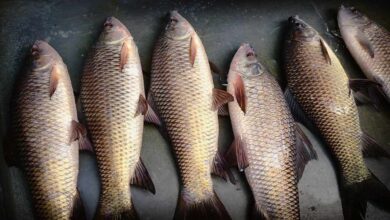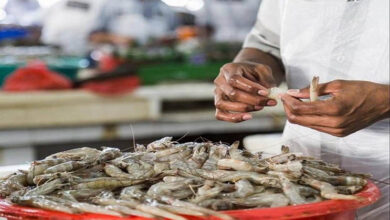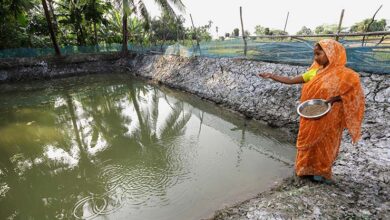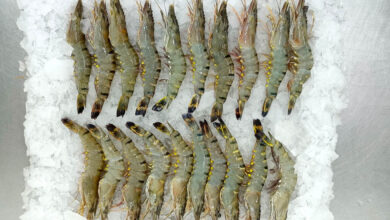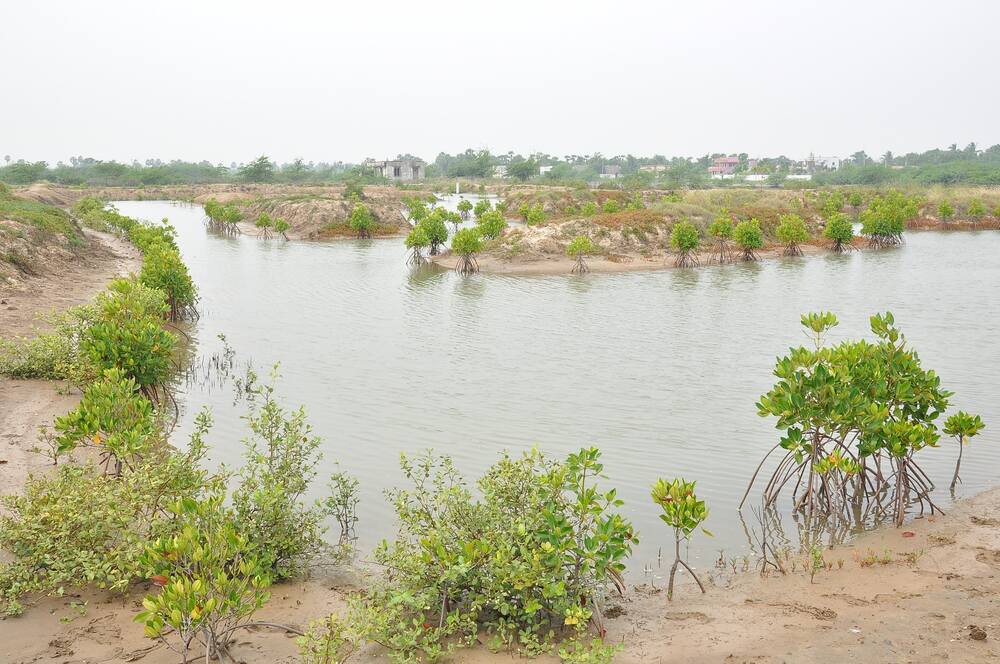
Significance of Mangrove Ecosystem:
Among the planet’s most significant and productive ecosystems are the mangrove forests found around tropical shores. Because of their immense potential to store carbon, trees play a vital role in preserving the coasts and stabilizing the global climate, among other things. The mangrove ecosystem is a highly specialized environment found in tropical and subtropical climates, between land and sea.
Numerous animal species have been observed to feed, breed, and find refuge in this habitat, making it their natural home. Numerous endangered and uncommon wildlife species, including the Gangetic dolphin, olive ridley turtle, water monitor lizard, and estuarine crocodile, can be found there.
Important ecosystem services and functions, such as food for local residents, fuel and building materials, traditional medicine, are provided by natural and intact mangrove forests. Mangrove forests also stop erosion, help with nutrient cycling, shield coastal areas from storm surges, and trap significant amounts of carbon. Situated in the Bay of Bengal’s delta, the Sundarbans are home to the world’s largest mangrove forests, the Ganges, Brahmaputra, and Meghna.
Threads for Mangrove Ecosystem:
In the last several years, mangrove forests around the world have drastically decreased—by 20 percent just since 1980. One of the main causes of their devastation, in addition to other natural and human-caused issues, is the unrestrained growth of aquaculture, particularly in South and Southeast Asian nations.
By 2050, there will likely be 10 billion people on the planet, which would increase need for protein. With 93.8% of fish stocks being fished at or beyond their maximum sustainable limit, aquaculture will play a critical role in supplying food in the future. In the near future, aquaculture production is expected to overtake wild-capture fisheries as the main source of protein for aquatic animals.
Mangrove loss in tropical and subtropical coastal regions has been linked to aquaculture. One of the most lucrative aquaculture commodities is farmed shrimp, which are cultivated in a range of production systems from extensive to intense, mostly in Southeast Asia and Latin America.
Historically, shrimp culture has been responsible for 38% of the world’s mangrove loss. The majority of shrimp aquaculture occurs in the intertidal zones of tropical coastlines, where intact mangrove forests are primarily found. These places also maintain high biodiversity and offer important ecosystem processes and services. Eight tropical countries that produce 83% of the world’s shrimp are thought to have converted 544,000 hectares of mangrove forest due to aquaculture. Although the primary cause of the decline in mangroves in Southeast Asia has shifted in recent times to aquaculture, pressure on these coastal ecosystems has not decreased.
What is IMA or Integrated Mangrove Aquaculture?
Notwithstanding these drawbacks, shrimp farming has the potential to greatly advance mangrove conservation and restoration as a major economic activity in mangrove areas. This holds true for various farm and community areas as well as aquaculture systems. There have been many requests for better sustainable aquaculture methods that preserve mangroves as a result of the widespread criticism that shrimp farming is to blame for the loss and degradation of mangrove forests. Integrated mangrove aquaculture (IMA) is one approach that has been put out to strike a balance between aquaculture production and mangrove protection.
Adoption of Integrated Mangrove Aquaculture Approaches:
A new shrimp farming project called Sustainable Aquaculture In Mangrove Ecosystem (SAIME) in the Sundarbans offers hope for the rehabilitation of mangroves. Scientists are thus focusing on the establishment of pilot aquaculture farms that make use of sustainable IMA (integrated mangrove aquaculture) systems as part of the SAIME (Sustainable Aquaculture in Mangrove Ecosystems) project. Mangroves are planted in the pond itself, in the water channels, and in the dams as part of this pond farming technique. Because of this, shrimp and mangroves can coexist together, and the ecology is protected.
Mangrove trees are incorporated into low-density shrimp and fish aquaculture systems, which are known as “silvofisheries,” or IMA for short. Mangrove forests are sometimes turned into ponds, leaving some of the mangroves intact; in other situations, mangroves are added to previously deforested regions to create shrimp pond areas. In Indonesia, milkfish and other species are also raised in IMA systems.
The rehabilitation of mangroves in the Sundarbans is given hope by the new sustainable shrimp farming venture. Bangladesh Environment and Development Society (BEDS) and Global Nature Fund (GNF) are spearheading the community-based project of sustainable shrimp farming. Since its launch in 2019, the initiative has developed a cooperative ecosystem that unites a number of important players from academia, research institutions, and government agencies to co-create and promote the project comprehensively.
In partnership with the Indian Institute of Science Education and Research (IISER), Kolkata’s Center for Excellence in Blue Economy (CoE-BE), a research program on the role of mangrove leaf litter in the nutritional dynamics of SAIME ponds has been launched
Mangroves are a type of coastal intertidal zone vegetation made primarily of trees and bushes. During severe weather, they stop erosion and absorb the effects of storm surges. The proliferation of huge aquaculture systems like IMA may jeopardize the remaining mangrove habitats because many shrimp farmers run large systems that require a lot of area for each unit of production. According to recent surveys conducted in Vietnam, Thailand, and India, most intensive aquaculture production currently takes place outside of typical mangrove habitat, meaning that the farms are not directly responsible for the degradation of mangroves.
The government’s and industry’s adoption of IMA approaches to balance ecosystem functions and services and biodiversity conservation with shrimp production seems inappropriate. With the fragmentation of forests in IMA systems and the possibility that they cannot support biodiversity and ecosystem functions and services comparable to intact mangrove stands.
Over time, rehabilitation of mangrove habitats can restore some of the benefits of intact mangrove ecosystems; nevertheless, the most important thing to do is to prevent conversion of the remaining mangrove habitats, which will protect the vital ecosystem services and functions.
Furthermore, there are significant differences in the financial and technological requirements between intensive systems and integrated aquaculture, which can create obstacles to intensification that could exclude small investors and result in ownership consolidations.
Farhana Islam
Agriculturist, Researcher
Fisheries Resource Management, CVASU

